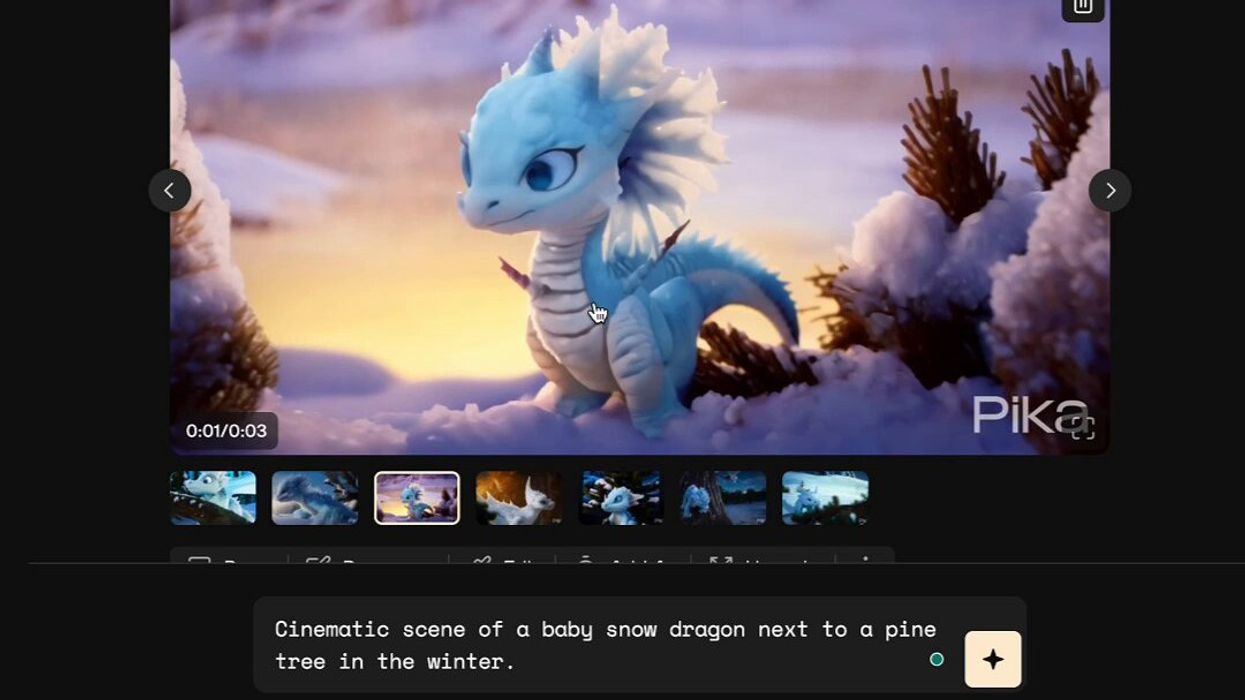
Things are starting to get pretty wild in the world of AI-generated video. As we’ve covered since its launch, Pika Labs has been making great strides forward for generative-AI video—and it’s been one of the best sources for creating cinematic AI videos from the get-go.
However, with their latest release of Pika 1.0, its AI-video has taken a major leap forward with its true idea-to-video platform. Yet, perhaps lost in all of the shuffle and bustle surrounding their new offering was one killer AI feature that many didn’t get a chance to more thoroughly explore.
So, for those interested in seeing the absolute latest and potentially greatest that AI video has to offer, let’s take a deeper look at Pika 1.0’s “Expanded Canvas” tool and explore what it could mean for your cinematic AI compositions and videos.
Introducing Pika 1.0 Expanded Canvas
For this breakdown we’re going to be featuring some videos produced by the Twitter/X user Blaine Brown (@blizaine) who has shown us some of the best representations of this feature in action so far.
At its core, it’s a pretty simple feature that is quite similar to Adobe’s generative fill really.
However, when used in this new Pika 1.0 text-to-video platform, the results (and possibilities) become much more impressive. As you can see in the video below, all it needs to work is a short clip uploaded to the Pika platform, then a short text prompt outlining what you’d like to see the AI expand.
From there Pika 1.0 is able to expand the canvas and add in additional video information and footage to your scene, which—as you can imagine—can lead to a whole host of new possibilities for what to do with this extra coverage.
Expanded Canvas for Real Video
What’s even more impressive about this technology is that it’s not just limited to the typical animation-style videos that we usually see with generative-AI video so far. In this next example shared by Brown, we see that this expanded canvas feature can also be used on real footage to expand a scene as well.
Now things are starting to get bonkers. This could potentially unlock all types of possibilities for filmmakers and video professionals.
Off the top of my head I can think of several ways in which this could be a useful tool as it would help with expanding your coverage if you were shooting to tight, an easy way to convert videos from horizontal to vertical for different social shares, or even a way to save on production resources by only lighting for close-ups then adding in wider elements later.
You can see this technology in action in this clip shared below.
The Future of Generative Canvas Filmmaking
As mentioned above, this AI technology isn’t that dissimilar to what Adobe’s been promising with their generative fill tool, which we wrote about when it first came out. As we said then, and repeat now, this is only one of the obvious conclusions to AI technology as it simply makes so much sense to bring about.
Pika 1.0 is just one of the companies leading the way with this technology currently, however it wouldn’t be surprising at all to see this become a mainstay of generative-AI video for all of the major players here soon.
The real question at this point might simply be what do you plan to do (or not do) with this technology as it becomes easier to access and use. Could you see yourself changing your production and editing workflows? It’s a bit exciting and terrifying at the same time, but this is truly one of the bigger game changers hitting the industry as we speak.
Author: Jourdan Aldredge
This article comes from No Film School and can be read on the original site.
